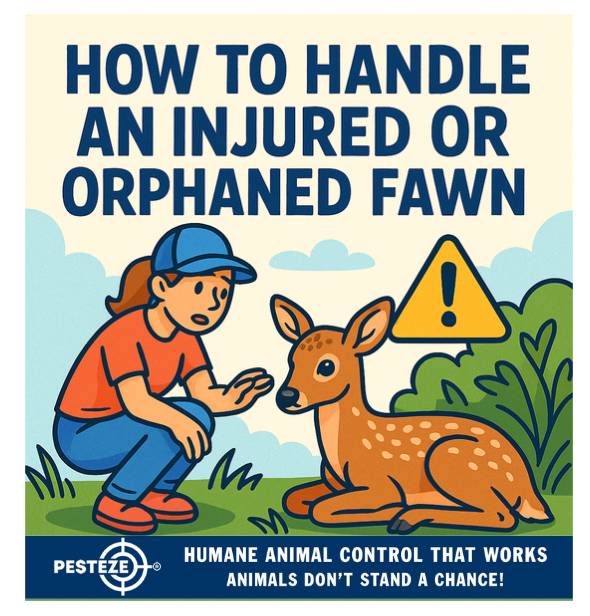HOW TO HANDLE AN INJURED OR ORPHANED FAWN

HOW TO HANDLE AN INJURED OR ORPHANED FAWN
SUMMARY
Finding an injured or orphaned fawn can be alarming, but the wrong response can do more harm than good. This guide explains safe and humane steps to take when you encounter a fawn in need.
FEATURES
-
Observe First: Many “orphaned” fawns are not actually abandoned.
-
Limit Contact: Human scent can attract predators or stress the fawn.
-
Check for Injuries: Look for limping, bleeding, or visible wounds.
-
Do Not Feed: Improper feeding can be fatal to young deer.
-
Contact Wildlife Experts: Call licensed rehabilitators for help.
-
Ensure Safety: Keep pets and people away until professionals arrive.
GUIDE DESCRIPTION
It’s natural to feel concerned when you see a fawn lying alone in your yard, near a trail, or on the edge of a forest. However, most fawns are not actually abandoned. Deer mothers often leave their young hidden for hours while they forage, returning later to nurse them. For this reason, the first step when you see a fawn is always to observe from a distance.
A healthy fawn that is quiet, lying still, and appears uninjured should be left alone. Interfering too quickly can separate it from its mother unnecessarily. However, there are situations when human action is appropriate. If the fawn is crying continuously, wandering aimlessly, or showing visible injuries such as bleeding or limping, it may need professional assistance.
It’s also important to limit contact. Touching the fawn can cause stress and may transfer your scent, making it more vulnerable to predators. If you must move it for immediate safety (for example, out of a road), do so carefully and only as far as necessary.
Never attempt to feed the fawn. Cow’s milk, formula, or other substitutes can cause severe digestive problems and even death. Only licensed wildlife rehabilitators know the correct formula and feeding methods for orphaned deer.
The best action you can take is to contact a local wildlife rehabilitation center or animal control. Provide them with the fawn’s location and describe its condition. They can advise you on the next steps and, if needed, send a professional to retrieve it.
Meanwhile, keep pets, children, and other people away from the fawn. Stress can make its condition worse, and animals like dogs may unintentionally harm it.
By taking these careful steps, you ensure the fawn gets the help it needs without interfering with natural survival behaviors. Remember, the goal is always to support wildlife in the most humane and least intrusive way possible.
- Saneeth Thota


Comments 0